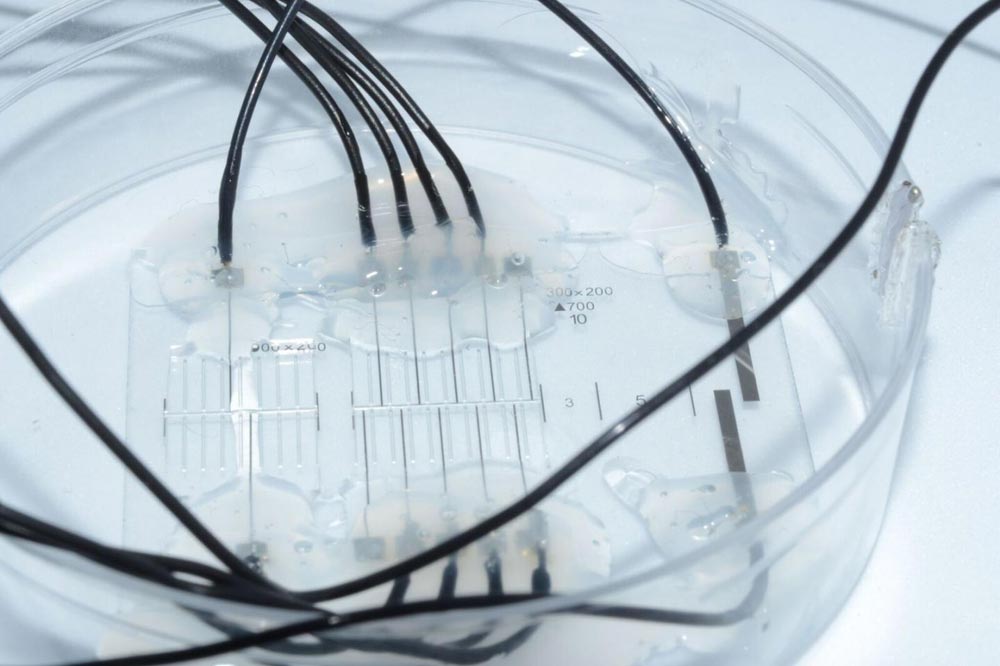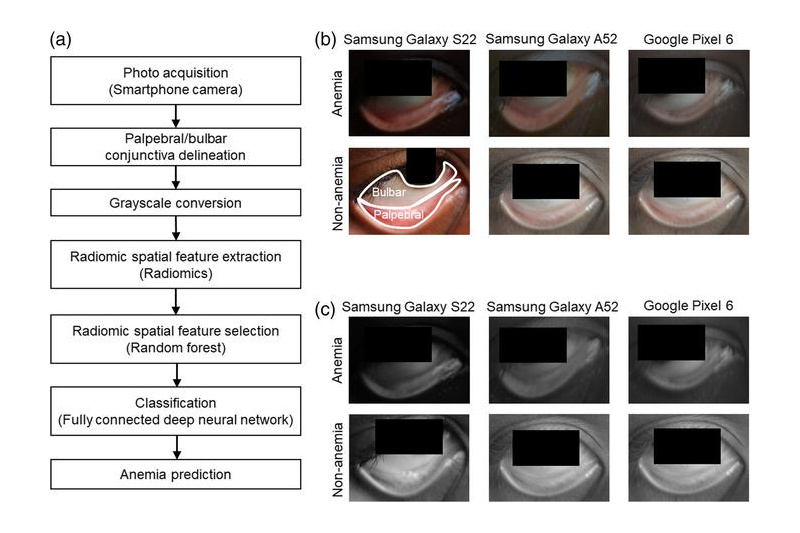

The 'nerve-on-a-chip' platform paves the way to using chips to improve neuroprosthetic designs.
Credit: © 2018 EPFL
Stimulating nerves at the right place and the right time is essential for implementing effective treatments, but still a challenge due to implants' inability to record neural activity precisely. “Our brain sends and receives millions of nerve impulses, but we typically implant only about a dozen electrodes in patients.
This type of interface often doesn't have the resolution necessary to match the complex patterns of information exchange in a patient's nervous system,” says Sandra Gribi, a PhD student at the Bertarelli Foundation Chair in Neuroprosthetic Technology.
Replicating – and improving – how neuroprosthetics work
Scientists at the lab run by Dr. Stéphanie Lacour, a professor at EPFL's School of Engineering, have developed a nerve-on-a-chip platform that can stimulate and record from explanted nerve fibers, just as an implanted neuroprosthetic would. Their platform contains microchannels embedded with electrodes and explanted nerve fibers faithfully replicate the architecture, maturity and functioning of in vivo tissue.
The scientists tested their platform on explanted nerve fibers from rats' spinal cords, trying out various strategies for stimulating and inhibiting neural activity. “In vitro tests are usually carried out on neuron cultures in dishes.
But these cultures don't replicate the diversity of neurons, like their different types and diameters, that you would find in vivo. Resulting nerve cells' properties are changed. What's more, the extracellular microelectrode arrays that some scientists use generally can't record all the activity of a single nerve cell in a culture,” says Gribi.
The nerve-on-a-chip platform developed at EPFL can be manufactured in a clean room in two days and is able to rapidly record hundreds of nerve responses with a high signal-to-noise ratio. However, what really sets it apart is that it can record the activity of individual nerve cells. The research has just been published in Nature Communications.
Inhibiting the activity of specific neurons
The scientists used their platform to test a photothermic method for inhibiting neural activity. “Neural inhibition could be a way to treat chronic pain like the phantom limb pain that appears after an arm or leg has been amputated, or neuropathic pain,” says Lacour.
The scientists deposited a photothermic semiconducting polymer, called P3HT:PCBM, on some of the chip's electrodes. “The polymer heats up when subject to light. Thanks to the sensitivity of our electrodes, we were able to measure a difference in activity between the various explanted nerve fibers. More specifically, the activity of the thinnest fibers was dominantly blocked,” says Gribi. And it's precisely those thin fibers that are nociceptors – the sensory neurons that cause pain. The next step will be to use the polymer in an implant placed around a nerve to study the inhibiting effect in vivo.
Distinguishing between sensory and motor nerve fibers
The scientists also used their platform to improve the geometry and position of recording electrodes, in order to develop an implant that can regenerate peripheral nerves. By running the measured neural data through a robust algorithm, they will be able to calculate the speed and direction of nerve impulse propagation – and therefore determine whether a given impulse comes from a sensory or motor nerve. “That will enable engineers to develop bidirectional, selective implants allowing for more natural control of artificial limbs such as prosthetic hands,” says Lacour.
###
Funding
This work is supported by the Swiss National Science Foundation, grant CR32I2- 149609SFN, and the Bertarelli Foundation.
Reference
“A microfabricated nerve-on-a-chip platform for rapid assessment of neural conduction in explanted peripheral nerve fibers.” Sandra Gribi, Sophie Du Bois De Dunilac, Diego Ghezzi and Stéphanie P. Lacour.












